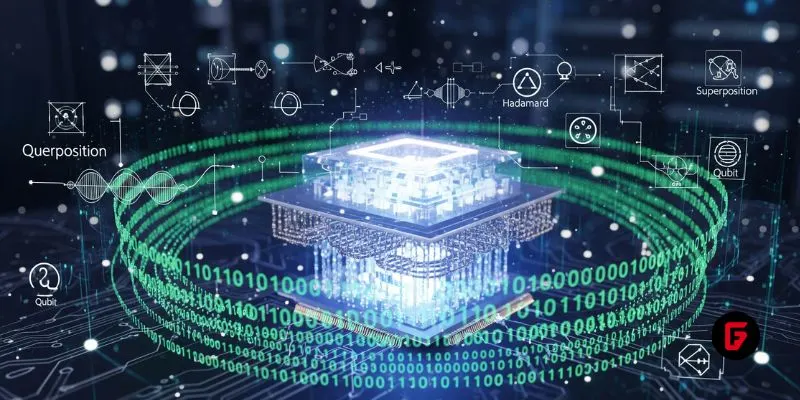The Fragility of Quantum Processing
Quantum computers, powered by qubits instead of classical bits, promise to solve problems that traditional computers simply can’t tackle. But there’s a catch: qubits are notoriously delicate, easily disturbed by their environment, making quantum systems uniquely prone to errors. Even in shielded cryogenic setups, stray photons or vibrations can knock qubits out of alignment; every quantum algorithm is a fight against the chaos of nature.
Maintaining a “quantum state” involves keeping qubits entangled—a process so sensitive that even measuring them directly can destroy vital information.
Cracking the Code of Error Correction
Classical computers employ straightforward methods to correct errors; quantum computing is infinitely trickier. You can’t just “peek” at qubits and fix what’s wrong, because observation collapses their quantum state.
Instead, quantum error correction uses redundant or “sacrificial” qubits to infer the collective state of operative ones. The holy grail is a powerful error correction decoder that can spot and fix issues in real time, without melting the quantum computation.
What Makes IBM’s Relay-BP Unique?
Relay-BP isn’t just another iterative algorithm. It revolutionizes classical “belief propagation” by introducing dynamic memory strengths. Different nodes in the algorithm remember, forget, and adapt based on incoming evidence. This nuanced approach avoids old pitfalls—like getting stuck in the wrong answer—by allowing the system to “reconsider” and search for more probable corrections.
The kicker? Relay-BP can achieve up to 10 times better accuracy than previous decoders, such as BP+OSD. Plus, it’s lightweight enough to run on field-programmable gate arrays (FPGAs) or application-specific integrated circuits (ASICs), keeping up with the fast pace of quantum hardware.
Why Are qLDPC Codes So Important?
Most quantum error correction schemes use “surface codes,” which require enormous numbers of physical qubits to achieve reliability. Quantum Low-Density Parity Check (qLDPC) codes slash this overhead by up to 90%. Greater efficiency means a realistic path toward quantum computers powerful enough for practical tasks, from drug discovery to the simulation of complex materials.
The catch? Solving qLDPC codes in real time demands an ultra-efficient decoder. That’s the role Relay-BP was designed for—a task previously considered out of reach.
How Will Relay-BP Accelerate the Road to Fault-Tolerant Quantum Computing?
IBM is already incorporating Relay-BP into its quantum development roadmap. The new decoder will undergo real-world testing on the Kookaburra system in 2026, leading up to the Starling fault-tolerant quantum computer by 2029—envisioned to run 100 million gates on 200 logical qubits.
Relay-BP marks a pivotal moment: quantum error correction that’s not just theoretical but practical, compact, and fast enough for industrial use. IBM’s cross-disciplinary team—from physicists to engineers—has aligned its innovation with real-world demands, setting a new benchmark for the sector.
What Does IBM’s Breakthrough Mean for the Quantum Future?
While others (like Google and Quantinuum) push the boundaries with their own advances, IBM’s focus on scalable, hardware-efficient error correction addresses one of quantum computing’s thorniest bottlenecks.
This algorithm may not single-handedly solve all quantum error correction woes, but it brings us several steps closer to a future where fault-tolerant quantum computing achieves practical relevance—opening doors for industries, researchers, and, ultimately, society as a whole.
In the race for quantum advantage, IBM’s Relay-BP is more than just another algorithm—it’s the missing piece to unlock reliable quantum computers that don’t just survive, but thrive, in the real world.














